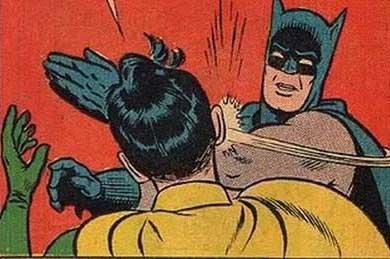1) Two great articles on placebos. The evolutionary history of placebos from Nicholas Humphrey – “when people are cured by placebo medicine, they are in reality curing themselves” – “The placebo effect is a particular kind of priming effect.” And how placebo helps pain from Todd Hargrove – “In other words, the placebo effect does not involve anything magical. It is one of many ways that our cognition affect our physiology.” – “The research of Benedetti and others has identified three different patterns of mental processes that create the placebo effect: (1) expectations of benefit; (2) reduction of anxiety; and (3) learning through association.”
2) Customised foot orthoses are no more effective than sham foot orthoses for reducing symptoms and improving function in people with mid-portion Achilles tendinopathy undergoing an eccentric calf muscle exercise programme. And apparently heel lifts for Achilles patients are not very effective according to the latest evidence.
3) This Cupples quote helps display the complexity of the PRI system -”The goal is to flex the sphenoid, which closes the foramen magnum and produces appropriate OA extension. This position keeps the brainstem happy.” And that’s the simple way to say it.
4) It might not be the ITB that’s flicking over the lateral femoral condyle…
5) This might be the best glute max exercise you are not doing.
6) “Both cognitive and somatic relaxation strategies reduce perceived stress and physiological markers of stress.”
7) If you have any interest in handstands, you need to read this. “when it comes to improving your overall strength, body control, and spatial awareness, it’s hard to beat handstand training.”
8) Another very thorough and intelligent series from the Gait Guys. This time they cover the different aspects of stretching. Links – Why it Feels Good, Thoughts, Reciprocal Inhibition, Autogenic Inhibition, Symmetrical Tonic Neck Reflex, Asymmetrical Tonic Neck Reflex
9) The radial nerve is often involved in elbow pain. A new study finds “A single session of 3 neural mobilization resulted in a decrease of pain in computer users with lateral elbow pain. A long-term randomized trial is necessary to determine the effects sustained over-time.” This was their prescription in the study – “The radial nerve was mobilized using a series of 8 oscillations and repeated 3 times with a one minute rest in between.”
10) “If your muscles are tight no matter how much you stretch, you may need strength to support the stretch.”-Kathy Dooley with a great concise post on the 4 knots
11) Foam Rolling
“If there’s too much compression it can cause the muscle to contract harder, but enough compression to cause some overload can help stimulate and then fatigue the receptor, which helps to “release” the muscle or sarcomeres affected so there’s less tension.”-Dean Summerset
“Roller massage was painful and induced muscle activity, but it increased knee-joint ROM and neuromuscular efficiency during a lunge.”-Duane C. Button
“The possible effects of foam rolling on serum cortisol, combined with other findings regarding its effects on arterial stiffness, arterial function and vascular endothelial function, are intriguing. While the research is not extensive enough for us to make recommendations, it will be fascinating to see whether future work confirms these findings, which indicate that foam rolling may have some sort of modulatory effect on the autonomic nervous system.” -Chris Beardsley
I think it also has a role in cortical mapping to improve body awareness.
12) “They found that the knee OA patients had significantly less coronal plane range of motion at the midfoot and significantly less sagittal plane range of motion at the hallux compared with the controls.”
13) Technology is having quite an effect on our species; both physically and mentally. We need to make sure we educate patients on efficient mechanics, adverse postures, good movement, and healthy lifestyles. Otherwise this might be our future. This text-neck article became popular this past month. It has some great points, just make sure you don’t give your patients any thought viruses when educating on posture/mechanics.
14) Andreo Spina shares a common pull-up mistake.
15) Why muscle stiffness is important for elastic recoil during running.
16) Eric Cressey goes over 3 coaching cues – 1) Follow your hand with your eyes 2) Drive hamstring tension before pulling the bar 3) Let the scapula go where the humerus goes
17) Here’s a nice evidence based article on the high plank exercise.
18) “Work capacity is the integrity of postures and patterns against fatigue across time. “-Gray Cook
19) It’s not the mind that makes a great clinician, it’s the mindset.
20) Physical therapy would be so much easier if everyone just listened to everything I said. Unfortunately, convincing people to move and changing beliefs are a very important part of the job. Here’s a great article on how to get people to do what you want them to do.
21) An interesting read on endogenous analgesia. “Our nervous system has the capability to reduce pain by activation of specific pathways that exert inhibitory effects on the messages entering the central nervous system during or after threat or damage to the body.”
22) Getting bored with early post ops? Not sure what to add in this slow stage? Zac Cupples gives some great ideas in this article.
23) More on placebos, “compared to control, the injected placebo improved 3 km race time by 1.2%.”
24) Erson Friday 5’s
5 TMD Tips – 1) The Nod 2) Diet 3) Mandible Protrusion 4) How They Eat 5) Self Masseter Massage
5 Press-Up Advancements – 1) Full UE Extension 2) Make it Passive 3) Cervical Extension 4) Sag 5) Start in Quadruped and Drop In
25) This is my favorite new foot exercise. You’ll be amazed at how many of your patients can’t do it.
25) “pain during training had an impact on the retention of motor memories” – “These results suggest that the same motor rehabilitation intervention could be less effective if administered in the presence of pain.” (via @RyanDavisDC)
26) Pavel’s input on cervical positioning during the swing – cervical extension drives posterior chain activation.
27) Exposure Therapy “is an experiential treatment approach: people must expose themselves to the things they fear so that they learn, in person, that their fear is not founded upon genuine threat.” -Tory Madden
28) Eric Cressey goes over some great cues during the landmine press.
29) “Presently, the full explanation for development of tendinopathy remains elusive with two suggestions being currently proposed. One theory posits that tendinopathy reflects a misbalance between overloading of the tissue resulting in both a cell reaction towards apoptosis and increased proteolytic activity. An alternate theory suggests a local unloading of tendon cells due to micro-ruptures of collagen fibres as an initial step in pathological changes seen in tendon injuries. In this scenario, it would be the absence of tensile stimuli that would trigger catabolic alterations of tendon tissue.” #LoadTheTendons
30) There are no bad exercises, just bad clinicians/trainers. We need to stop making black and white statements about specific exercises. It confuses patients and can discredit our profession. Don’t agree? Read these two articles: Bret Contreras – Scotty Butcher
31) Eric Cressey shares 5 things he’s learned about mobility – 1) Soft Tissue Importance 2) Breathing 3) Don’t Conform to One Approach 4) Don’t Mistake Laxity for Mobility 5) Deposits > Withdrawals
32) People You Should Know – Brian Mulligan is a renowned physical therapist from New Zealand. Our profession owes him a great deal for his contribution to manual therapy. He discovered and developed the Mobilizations With Movement (MWM) technique. This manual approach restores function and decreases pain through non-painful, manual joint “repositioning”. In other words, his techniques provide an external input to centrate joints and improve human movement. The Mulligan Technique has become a standard in the physical therapy field as a great tool for manually improving movement. Here’s his story of how he came up with the technique:
“A young patient (in her 20s) came to see me with a painful immobile swollen interphalangeal joint. She injured it playing basketball. I tractioned the joint to no avail, then applied anterior glides to see if I could get it to move. No success. I then remember applying a medial glide which caused pain. I then applied a lateral glide and the patient said that it did not hurt. While sustaining the lateral glide I by chance asked her if she could move it. To my astonishment she flexed the joint with no pain. I asked her while I maintained the glide to do some repetitions. The result? Virtually full range of pain free movement. She returned two days later, the finger was fine and no further treatment was necessary.
Why was the treatment so successful? Louis Pasteur said that in the field of discovery chance only favours a prepared mind. I sure had a prepared mind. Why had the regular manual therapy treatment I was teaching failed? What did I do that was different? After much thinking the only explanation I could come up with was that there had to be a minute positional fault which inhibited joint movement and caused the pain. With this explanation in mind I began experimenting with all painful joint restrictions and Wow It changed my life.”
33) 4 Top Tweets of the Month
Follow John Kiely. He consistently puts out useful content.
- Perry Nickelston @stopchasingpain – ‘The slower you go, the more your brain teaches your body.’-Thomas Hanna
- Dr. Michael Chivers
@drmchivers – Joints need full mobility to give the CNS a good “picture” of what is going on. This way appropriate motor synergies can be chosen. - Charlie Weingroff
@CWagon75 – Figuring out how to skip steps without missing anything starts with tediously honoring a systematic approach so you don’t miss anything. - Robert Butler PT PhD
@rjbutler_dptphd – Kettlebell swing should be like a series of standing long jumps where the center of mass doesn’t go anywhere@Fakedanjohn
34) Happy Holidays





A little plagiocephaly work there in no. 34